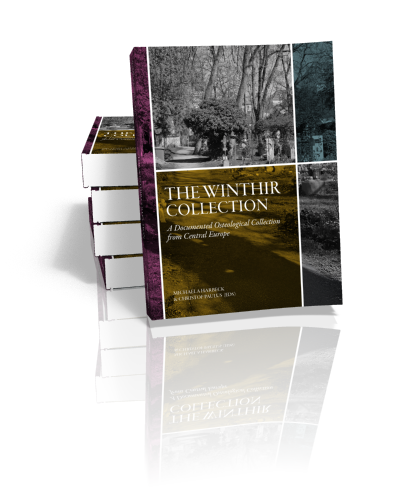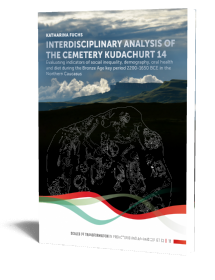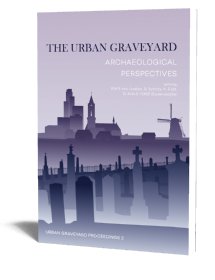Abstract:
The Winthir Collection is one of the few identified skeletal collections from the 19th century, offering a rare insight into the lives of 245 individuals recovered from a long-forgotten section of Winthir Cemetery in Munich, southern Germany. Now housed in the State Collection for Anthropology in Munich, these remains have been analysed through an interdisciplinary project that combines historical and osteological research.
For each individual, historical data such as demographics, cause of death, occupation, religious confession, number of children or burial class has been recorded. The osteological study reveals both population variation and the predominantly good preservation of the bones. Additionally, material finds accompanying the skeletons are described. This information is detailed in a comprehensive catalogue, enriched with numerous illustrations.
Essays explore the methodological approaches, excavation details, historical context, and initial findings from the collection. As a reference resource, the Winthir Collection can play a crucial role in academic research and practical applications in fields like forensic science, archaeology, medicine, and human biology. It allows for the validation of osteological methods, deepens our understanding of human growth and variation, and helps differentiate normal morphology from pathological conditions.
This book not only serves as an essential resource for researchers working with the Winthir Collection but also offers a fascinating window into life in 19th-century Munich. It may serve as a basis for further interdisciplinary and comparative research.
Contents
Foreword
Albert Zink
From the Winthir Cemetery to the Winthir Collection
Michaela Harbeck, Christof Paulus
Excavation and structure of the archaeological site
Frank Stremke, Franziska Schreil, Michaela Harbeck
Identification
Michaela Harbeck
Archaeology, academia, monument preservation: On the significance of investigations in the so-called Winthir Cemetery in Munich-Neuhausen
Jochen Haberstroh
Historical contextualisations
Barbara Schratzenstaller, Simon Degenhardt, Christof Paulus
The small archaeological finds of the Winthir Cemetery – a first overview
Melanie Marx
Osteological analyses and first exploration of skeletal marker of adult individuals
Michaela Harbeck, Eva Kropf, Nadine Carlichi-Witjes, Bernd Trautmann, Kristin von Heyking
Taphonomy and bone preservation
Kristin von Heyking, Nadine Carlichi-Witjes
Osteobiographies
Verena Straubinger, Eva Kropf
A first osteological look at the non-adult individuals
Janette Ja-Young Lee
The importance of the Winthir remains as an identified skeletal collection
Sandra Lösch
Catalogue

Dr.
Michaela Harbeck
Michaela Harbeck is curator at the SNSB, State Collection for Anthropology in Munich. She received her PhD and postdoctoral lecture qualification (Habilitation) in Biological Anthropology at the Ludwig-Maximilians University Munich. There she was working as an assistant professor before changing to her current position. She is co-author of two standard textbook for biological anthropology in German language and of many scientific articles dealing with all areas of Osteolarchaeology. The focus of her research, however, is on migration and living conditions in (early-) medieval times.
read more

Dr.
Christof Paulus
Christof Paulus is working at the House of Bavarian History (Haus der Bayerischen Geschichte) and is Associate Professor at the Institute of Medieval History, Ludwig-Maximilians-University of Munich. He completed his doctorate and postdoctoral lecture qualification (Habilitation) in medieval history. His research interests include early medieval global history, not least the First Plaque pandemic, the political and cultural history of the 15th century and methodological exchange with other research disciplines. He is the author of a comprehensive history of Bavarian culture from its beginnings to the present day (second edition 2025) and of numerous scientific articles, especially the edition of medieval sources.
read more











